Food Safety- Quality Assurance -
Our Commitment to HACCP
- Ensuring temperature control
- Each process incorporates the HACCP approach at its foundation to ensure temperature management. In addition to the implementation of supplier audits and periodic internal audits by a dedicated department, we strive to improve all of our procedures, processes, and equipment through implementation of the Plan-Do-Check-Act (PDCA) Cycle.
- [In-flight Meal Hygiene Management System]

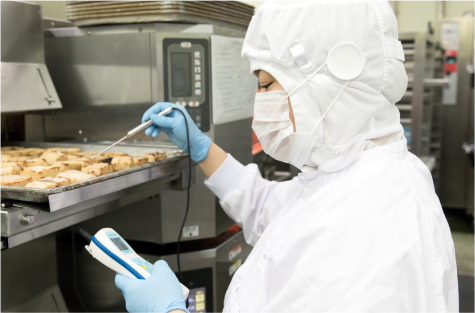
Hazard Analysis and Critical Control Point (HACCP)
Our management techniques involve the analysis of process hazards, and the continual monitoring of critical control points (CCP) to eliminate these hazards and ensure process safety. To prevent hazards during these processes, the
HACCP monitoring system monitors and records temperatures from ingredient procurement up to production and shipment. In the event of an abnormality, the system will address the problem immediately to prevent damage from spreading.
In order to increase the system’s effectiveness, we have created the hygiene control program, containing essential hygiene management knowledge for raw material production, as well as general information on food hygiene in
the management of facilities, equipment, machinery and tools, general food handling, employee health management, and education/training.
At ANA Catering Service, we have designated our own temperature standards by defining
temperature controls as an item of particular significance in effective management.
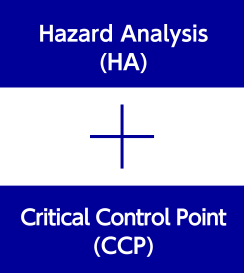
Inspection System
We conduct thorough daily inspections in order to implement consistent hygiene management. This includes temperature checks of ingredients upon receipt and routine microbiological testing by our quality control laboratory. Inspection results are then provided to worksites to improve procedures and operations.
-
Inspection upon Receipt
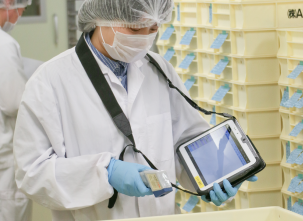 Ingredients are checked upon receipt for quantity and packaging, as well as for temperature. Boxes transported from outside are unpacked, with the contents transferred to
dedicated trays to ensure packing materials are not carried into the factory.
Ingredients are checked upon receipt for quantity and packaging, as well as for temperature. Boxes transported from outside are unpacked, with the contents transferred to
dedicated trays to ensure packing materials are not carried into the factory.
-
Quality Control Laboratory
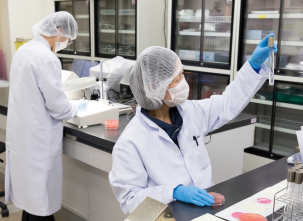 The quality control laboratory inspects the sampling of ingredients and cooking utensils in a space shut off from the outside. These inspection results are incorporated back into everyday operations.
The quality control laboratory inspects the sampling of ingredients and cooking utensils in a space shut off from the outside. These inspection results are incorporated back into everyday operations.
-
Recording
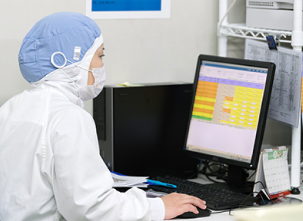 Production processes, product temperatures, and inspection history results are recorded and retained, meaning we can refer back to any of our operations at any time. In addition to this,
we store samples of products shipped in case any abnormalities are suspected after this point.
Production processes, product temperatures, and inspection history results are recorded and retained, meaning we can refer back to any of our operations at any time. In addition to this,
we store samples of products shipped in case any abnormalities are suspected after this point.
Facilities
ANA Catering Service is making continuous efforts to improve its facilities. In particular, our Kawasaki factory, opened in April 2011, operates spotless facilities through its strict management of hygiene and security.
-
Handwashing Station
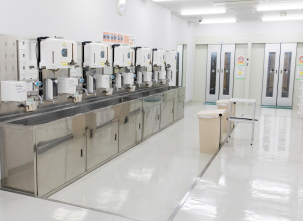 Employees must enter the handwashing station before entering the food processing area. Control processes prevent contamination from garbage or bacteria from outside, and there are
detailed steps defining procedures for employee cleanliness, such as dust removal, handwashing, alcohol disinfection, and air showers.
Employees must enter the handwashing station before entering the food processing area. Control processes prevent contamination from garbage or bacteria from outside, and there are
detailed steps defining procedures for employee cleanliness, such as dust removal, handwashing, alcohol disinfection, and air showers.
-
Fluorescent Light Covers
 If any fluorescent tubes crack during earthquakes, the lighting equipment in our factory is covered so that small fragments of glass cannot fall into the food.
If any fluorescent tubes crack during earthquakes, the lighting equipment in our factory is covered so that small fragments of glass cannot fall into the food.
-
Air Conditioning Filters
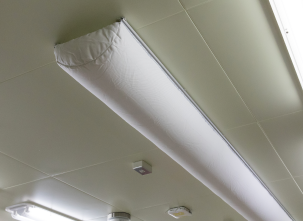 Air conditioner vents are covered with fabric to prevent dust from getting into the airflow.
Air conditioner vents are covered with fabric to prevent dust from getting into the airflow.
-
Blast Chiller (Rapid Refrigerator)
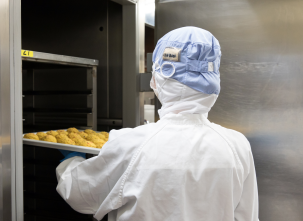 Our blast chiller meets HACCP criteria to cool food quickly after cooking, enabling us to provide delicious, safe in-flight meals.
Our blast chiller meets HACCP criteria to cool food quickly after cooking, enabling us to provide delicious, safe in-flight meals.
Education and Training
We provide periodic health and hygiene education and training for all of our employees, focusing on the daily, consistent practice of improvement activities, and on raising the morale and motivation of all of our staff.
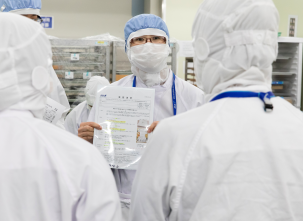
Food Defense
We deploy a wide range of both facilities/equipment and services to protect food from contamination, such as factory admission control, restricting access to food processing areas and belongings brought therein, and medication management.
-
Security Cameras
We have installed security cameras to monitor and control intrusion by suspicious individuals from outside, to monitor and prevent the inclusion of dangerous goods or foreign substances, and to guarantee food and employee safety and the peace of mind of our customers. -
Chemical Management
Chemicals for cleaning and inspections are categorized in accordance with rules designed to maintain cleanliness and tidiness, and stored in a secure, designated location. These chemicals are controlled and released with records of use and checks of remaining amounts to guard against unauthorized removal.

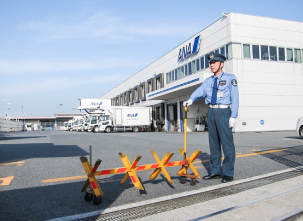 We have introduced an IC card entry and exit control system at site and building entrances, allowing only authorized employees to enter the bonded area. This means that
certain areas are off limits to unauthorized employees and visitors.
We have introduced an IC card entry and exit control system at site and building entrances, allowing only authorized employees to enter the bonded area. This means that
certain areas are off limits to unauthorized employees and visitors.
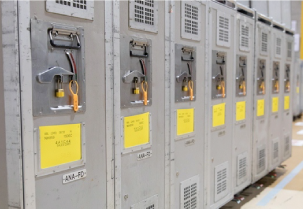 The security stickers (tags) attached to the trolleys for meals can only be removed by the cabin crew. In order to ensure safety during transport, the stickers are attached to the
trolleys after loading onto the high-loader trucks, and are then verified at airport security control checkpoints.
The security stickers (tags) attached to the trolleys for meals can only be removed by the cabin crew. In order to ensure safety during transport, the stickers are attached to the
trolleys after loading onto the high-loader trucks, and are then verified at airport security control checkpoints.
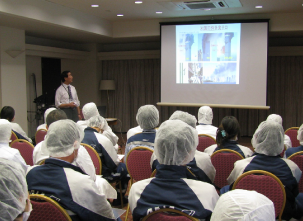 We provide regular safety education programs for all employees using movies and other easily understood materials for different operations.
We provide regular safety education programs for all employees using movies and other easily understood materials for different operations.
 For drivers, driving education programs, such as safe-driving seminars and driving checks by instructors in the passenger seat, are provided to consistently improve driving safety
awareness, knowledge, and technologies.
For drivers, driving education programs, such as safe-driving seminars and driving checks by instructors in the passenger seat, are provided to consistently improve driving safety
awareness, knowledge, and technologies.
